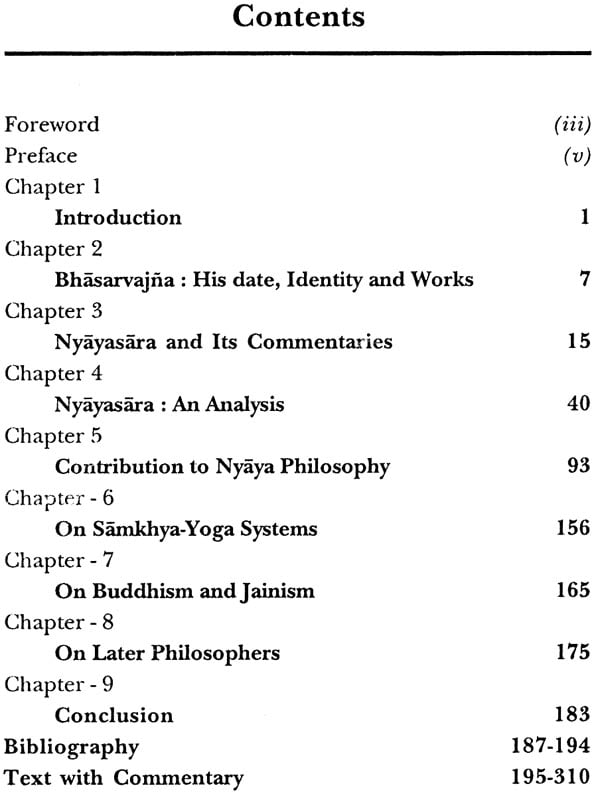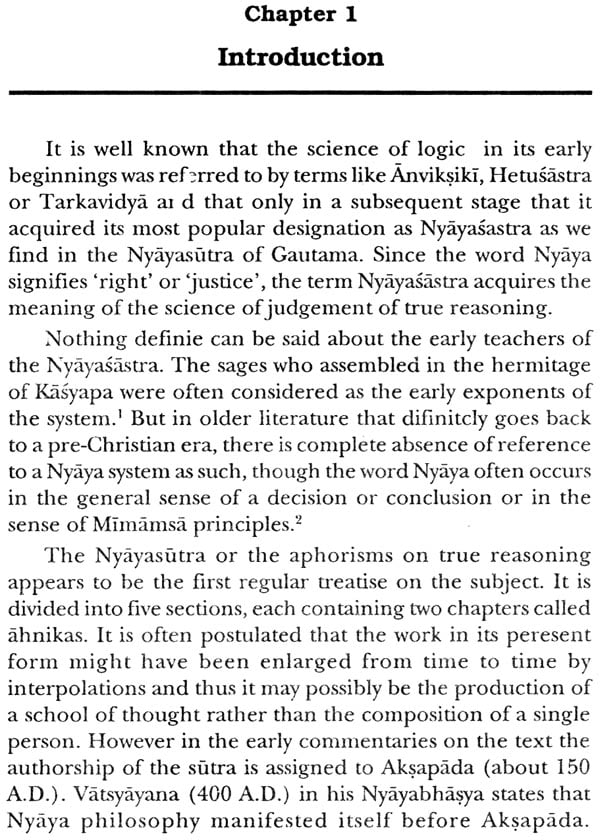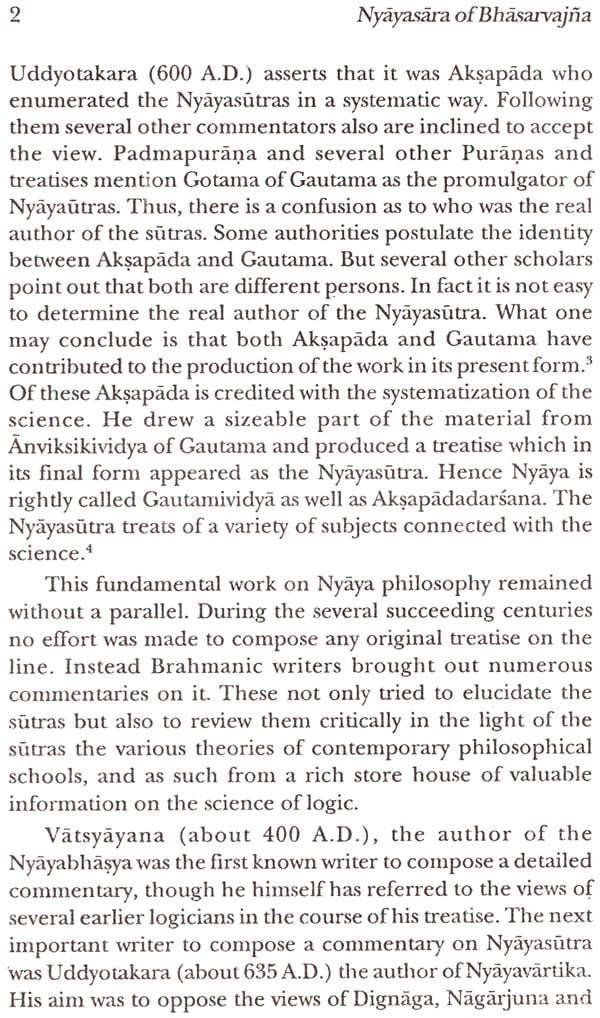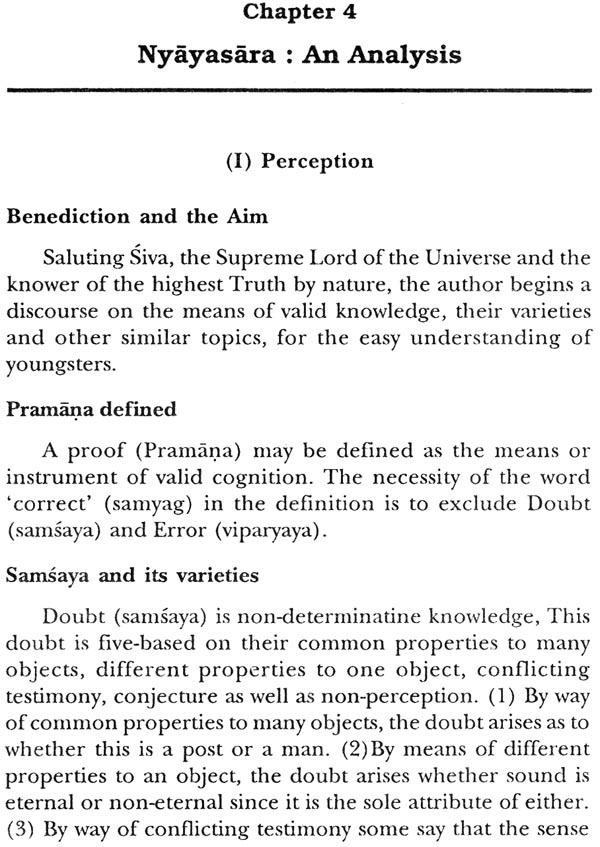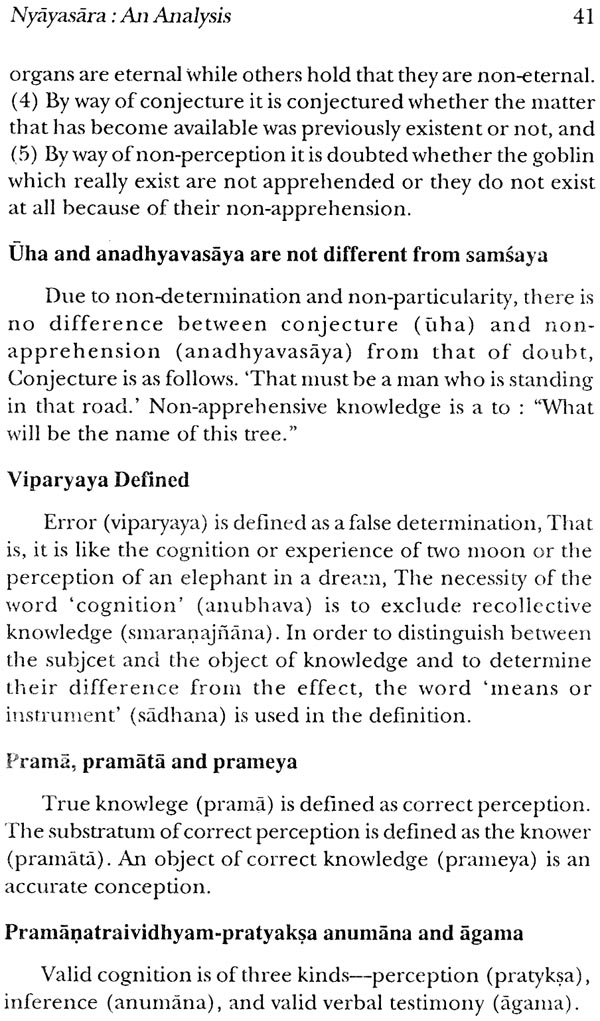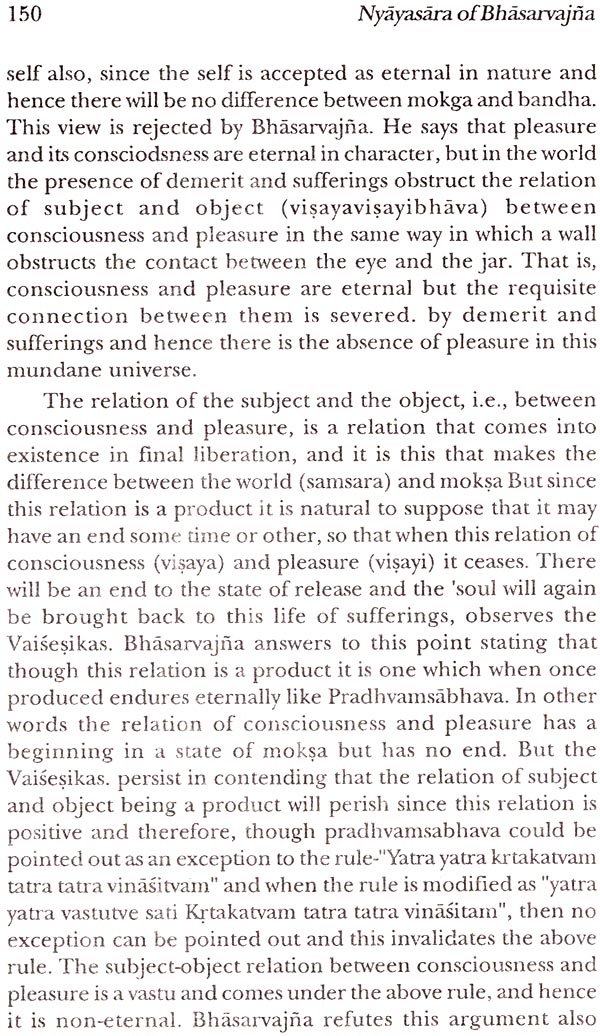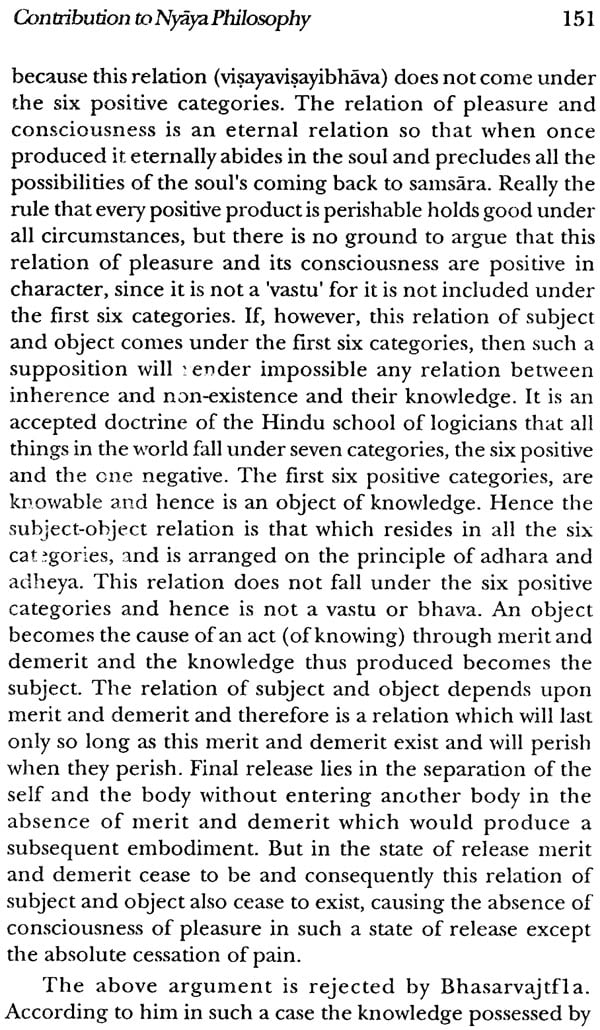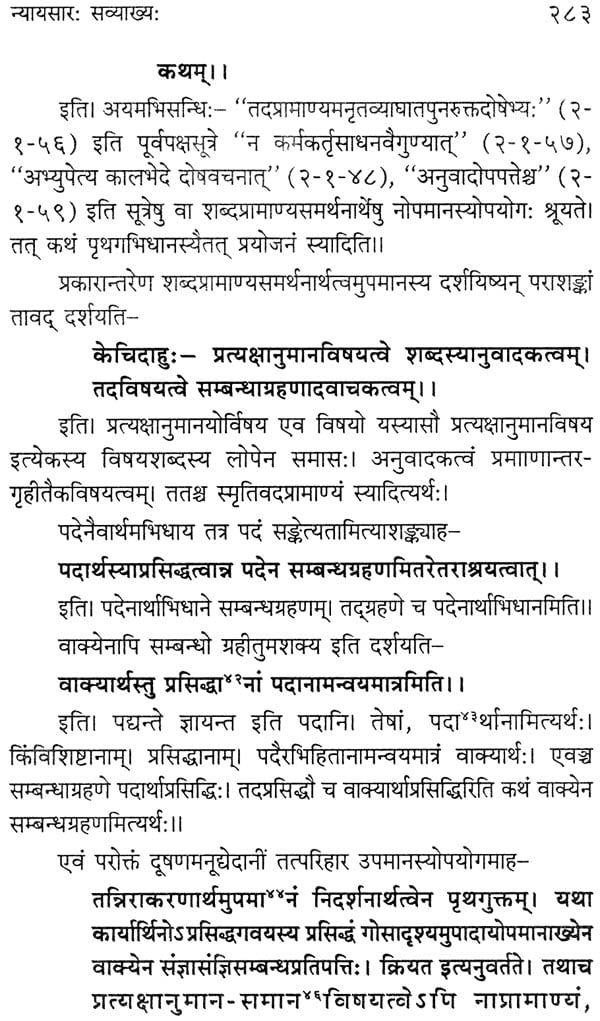
Nyayasasra of Bhasarvajna (With the Commentary Padabhanika of Vasudeva Suri)
Book Specification
| Item Code: | NAT511 |
| Author: | T. K. Narayanan |
| Publisher: | NEW BHARATIYA BOOK CORPORATION |
| Language: | ENGLISH AND SANSKRIT |
| Edition: | 2019 |
| ISBN: | 9788183153485 |
| Pages: | 310 |
| Cover: | HARDCOVER |
| Other Details | 8.50 X 5.50 inch |
| Weight | 500 gm |
Book Description
Jainism and Buddhism exercised, for several centuries, a potent influence on the system of philosophy and culture of Brahmanas. In the Deccan, the decline of Buddhism commenced in the 6th century AD, while in North India the Buddhists became almost extinct by 1200 AD. The Brahmanas who survived them, took back into their folds some of their members who had embraced Budhism and Jainism.
The treatises on logic, which were composed by them, borrowed their forms from the works of medieval school, while for their subject matter they went back to the works of ancient schools. The works so composed in this period were technically called "Prakarnas" or manuals of logic.
Bhasar vajna, the celebrated author of Nyayasara, who flourished about 950 AD was one of the earliest writers representing the Medieval school of Indian Logic. He was the first writers who attempted to reduce the sixteen categories to one. His well known logical treatise "Nyayasara’ or "the Essence of Logic" follows the method current in his time and treats only of pramanas which is divided into three kinds: perception (pratyaksa) inference (Anumana) and verbal testimony (Agama). This three-fold division of Pramana furnished a contrast to Aksapada who recognized a fourth kind named comparison. This position has brought Bhasarvajna close to the Samkhya and Jainas.
A detailed study of the text bringing out its special characteristics and estimating its contribution to Nyaya Philosophy has not so far been done. The present work is an attempt in this direction. The commentary of Vasudeva Suri is also appended to the text.
Dr. T. K. Narayanan (b. 6 May 5, 1952) obtained his B. A. (Sanskrit) and M. A. (Sanskrit) degree from the University of Kerala with distinction. The University of Kerala conferred on him the Ph. D. degree in 1981. Later he worked as Lecturer in Government Brennen College, Tellicherry and in Christ College, Irinjalakuda. In 1979 Dr. Narayanan joined the Department of Sanskrit, Calicut University as Lecturer, and retired as Professor of Sanskrit. He also held Administrative positions as Director, Academic Staff College, Registrar, Sindicate Member, and Academic Council Member in the same University.
Dr. Narayanan contributed learned papers to the journal of Oriental Institute, M.S. University Oriental Joumal. Tirupati, Joumal of manuscripts Studies, Kerala University etc.
Presently he is the Vice Chancellor of Kerala kalamandalam (Deemed to be University for Arts and Culture) cheruthuruthy, Thrissur, Kerala.
I am happy to note that the present study on the Nyayasara of Bhasarvajnia is issued for the second time. The first edition was well received by the world of scholars as the first critical study on the famous logician's contribution to the field of Nyaya philosophy. At that time the original text of the author was not included in the publication. This proved to be a disadvantage for the modern scholars. This time Dr. T.K. Narayanan has improved the edition by adding the original text to the study which formed the basis for his Doctoral thesis submitted to the University of Kerala under the guidance of the present writer. The text published in 193] in the famous Trivandrum Sanskrit Series along with the Padabhanjika commentary of Vasudeva Suri, is included in the present publication. I hope this will be appreciated by the present day scholars since the text has gone out of print for long. I am sure that this improved publication will be welcomed by all interested in the study of Nyaya philosophy.
Bhasarvajna, the celebrated author of Nyayasara was the foremost philosopher who successfully attempted to reconstruct Brahmanic logic on the plan of Buddhist logic. He appeared on the scene when both Brahmanism and Buddhism flourished side by side in Kashmir and was best suited to effect the reconciliation to the benefit of Brahmanic logic. Before his advent many writers crossed over to the fold of Buddhism and Jainism attracted by the superior logical tenets. The Buddhists built up a long tradition and achieved a great triumph over the orhodox Brahmanic writers. It was in this momentous situation that a new class of writers, generally known as Neo-Brahmanic writers emerged. They applied themselves to the task of reviving the teachings of the orthodox Hindu logic. Many a subject that received a detailed treatment in older texts was thrown away unceremoniously or modified to suit the contemporary trends of thinking.
In this renaissance Bhasarvajna played a significant role. The fact that he succeeded to a large extent is evident from the number of commentaries on his manual. A detailed study of his Nyayasara is a most rewarding experience to a student of logic.
The present volume divided into nine chapters is a modest attempt to assess the contribution of Bhasarvajinia to Indian thought, especially to the Nyaya system. The introductory chapter sketches the background against which he made his appearance while in the second his date identity and works are briefly dealt with. The third chapter is a survey of the commentaries on Nydyasara. The fourth, contains an analysis of his manual while in the next his contribution to Nyaya philosophy is discussed. The next two hapters—The sixth and the seventh — are set apart to point out his relation with other Philosophical schools like Samkhya, Yoga, Buddhism and Jainism. The penultimate chapter evaluates his impact on later philosophical writers. Finally it is concluded that Bhasarvajnia was the foremost Hindu logician whose contribution had a lasting effect providing the basis for the emergence of the Navyanyaya system.
It is my pleasure to express my deep sense of gratitude and admiration to Dr. N.P. Unni, Professor and Head of the Department of Sanskrit, University of Kerala and former Vice- Chancellor of the Sri Sankaracharya Sanskrit University, Kalady for his able guidance in preparing this monograph. The staff of the Department also deserves my thanks for their co-operation.
In the present second edition the text with the commentary of Vasudeva Suri is reproduced from the Trivandrum Sanskrit Series. It was long out of print.
**Contents and Sample Pages**
